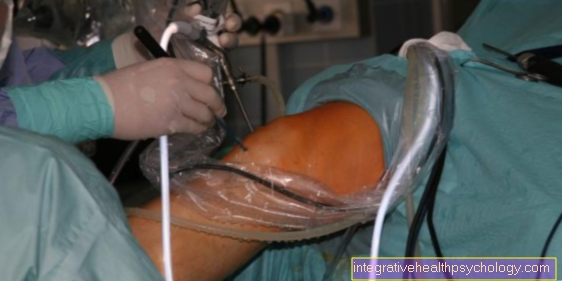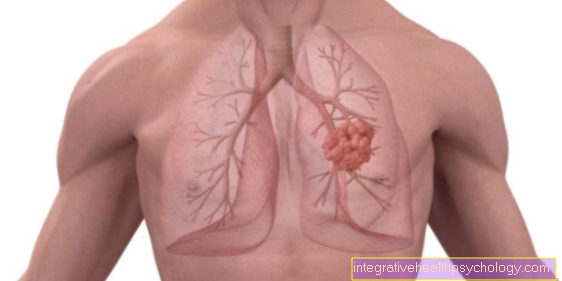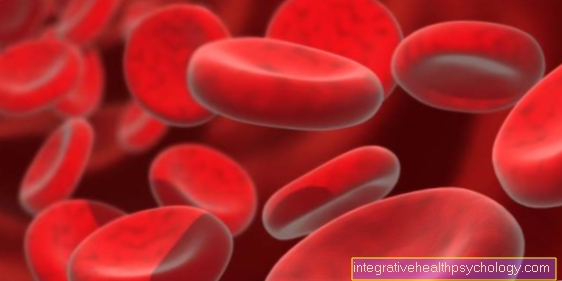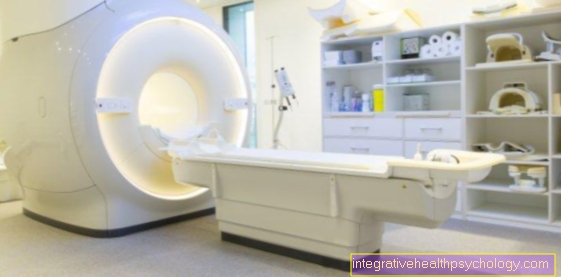PONV
What is a PONV?
PONV is the abbreviation for postoperative nausea and vomiting and describes nausea and vomiting after general anesthesia. In addition to postoperative pain, PONV is one of the most common complaints after an operation. Every third person suffers from it.
If a person is susceptible to nausea, the likelihood of developing PONV again is significantly increased with further general anesthesia.

The reasons
The exact causes that lead to nausea and vomiting after general anesthesia have not yet been clearly clarified. Messenger substances such as dopamine, serotonin, acetylcholine and histamine stimulate receptors of the vomiting center in the central nervous system. This receptor zone is located on the floor of the 4th brain ventricle. At this point the blood-brain barrier is permeable, toxins from the blood can reach the receptors, triggering vomiting and protecting people from harmful substances.
The chemotherapy-induced nausea is caused by the increased release of serotonin. Which messenger substances play the decisive role in PONV has not yet been fully clarified. Evidence is provided by the fact that smokers are affected by PONV half as often as non-smokers. A connection with changes in the dopamine receptors can be established here.
It is also noticeable that PONV occurs more frequently than average in laparoscopic operations, hysterectomy and gallbladder removal, but the exact relationships are still controversially discussed. Confirmed risk factors include a longer duration of anesthesia, implementation of anesthesia with anesthetic gas, and the administration of opioids for postoperative pain therapy. In addition, PONV occurs increasingly in women, non-smokers and people who suffer from motion sickness.
Find out more about the topic here: Dopamine and serotonin.
Other accompanying symptoms
Due to the excruciating nausea and vomiting despite an empty stomach, the well-being of those affected is greatly reduced. The well-being of the patient before and after the anesthesia is very important to quality management of the anesthesia.
PONV can lead to cold sweats and chills. Frequent vomiting can lead to electrolyte disorders, which can lead to cardiac arrhythmias, muscle twitching and cramps, as well as poor concentration and fatigue. A disturbance in the electrolyte balance can be quickly recognized by blood tests and counteracted with infusion solutions. The loss of fluid can cause blood pressure to drop, so care must be taken to ensure that the affected person is given plenty of fluid, preferably through a vein. If a patient vomits after anesthesia, stomach contents can reach the lungs via the trachea, as the protective reflexes are not yet completely intact. Breathing disorders and pneumonia can develop.
Read more about the topic here: Electrolytes.
Complications
Since the protective reflexes, especially the swallowing and coughing reflexes, have not yet fully returned immediately after general anesthesia, vomit can be swallowed and get into the lungs. The acidic stomach contents can damage lung tissue, obstruct the airways and cause pneumonia.
The pressure increase in the abdomen during vomiting can break open wounds that have just been sewn and cause profuse bleeding. Repeated vomiting can also lead to a disturbance in the electrolyte balance.
More on the topic lung infection can be read here.
What is the PONV Score?
The apple score is often used for preoperative risk assessment. It comprises four risk factors: female gender, non-smokers, known motion sickness or known postoperative nausea, and the likely use of opioid pain medication. One point is awarded for each factor. Correspondingly, the probability of PONV with 0 points is about 10%, with 1 point 20%, with 2 points 40%, with 3 points 60% and with 4 points 80%.
However, the apple score can only be used in adults. There is a correspondingly adapted POVOC score for children. It includes factors such as the duration of the operation ≥ 30 minutes, age ≥ 3 years, strabismus operation, adenotomy / tonsillectomy, anamnesis for PONV / motion sickness in the child or sibling, parents.
The diagnosis
The diagnosis can definitely only be made after the first general anesthetic. Sufferers complain of nausea after the operation and vomit despite an empty stomach. You are pale, sweaty in cold sweats and your wellbeing is severely impaired
The treatment
The treatment of PONV includes the administration of antiemetics, these are drugs that are applied centrally in the brain at the vomiting center or in the periphery and thus suppress nausea and nausea. The following drugs are available:
Dexamethasone is used at an early stage as the drug of choice, especially for prophylaxis and in addition to other antiemetics. Medicines from the "Setrons" group are very effective; they block the serotonin receptors in the vomiting center. Side effects can include headache and constipation.
Another very common drug is metoclopramide (MCP / Paspertin), the most common side effect is a drop in blood pressure. As the last step, the neuroleptic Droperidol can be administered, it works on the dopamine receptor and can trigger serious side effects, which is why strict controls must be carried out intra- and post-operatively. Acupuncture or the inhalation of aromatic substances can be used as additional measures.
If PONV occurs despite prophylaxis, the same drug should not be given postoperatively, but instead an alternative should be used. If complications occur during PONV, such as inhalation (aspiration) of vomit, antibiotics and intensive care therapy must be started immediately.
For more information, read on: Anti-nausea medication.
The prophylaxis
If a patient is known to have PONV, it may be possible to change the anesthetic method. With general anesthesia, the risk of developing PONV is 10 times higher than with regional anesthesia. The use of anesthetics that are administered via the vein (e.g. propofol) reduce the risk of PONV by up to 20%. Measures to save opioids e.g. Administration of non-opioids (NSAIDs, metamizole) or the postoperative use of pain catheters also reduce the incidence of nausea.
If general anesthesia cannot be avoided, dexametasone is administered via the vein for prophylaxis at the beginning of the operation. The effect only sets in after about two hours, so it must be administered in good time. Towards the end of the anesthesia, other antiemetics are used, e.g. Droperidol or metroclopramide (paspertin). Acupuncture can be used as a non-pharmacological method, here the acupuncture point P6 on the wrist plays an important role. Also, flavorings such as isopropophyl alcohol and peppermint oil provide relief.






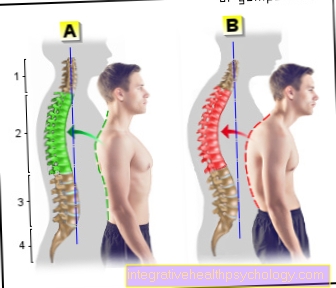






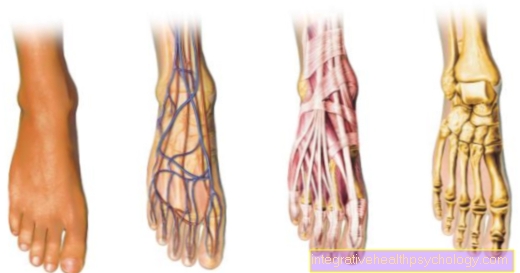


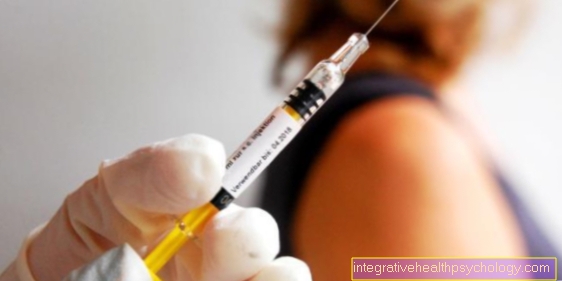


.jpg)




